Best Construction Company in Bangalore
Overview:
Sqft.Expert is Bangalore’s no1 technology enabled construction company. Our head office is located in Bangalore, and we are proud to offer the best Bangalore construction company to build your dream home most beautifully. Bangalore is known for its well-planned high-rises that blanket the horizon in stunning beauty. There are many real estate and top-of-the-line construction companies in Bangalore that can take care of all your construction needs. But the most important thing to consider is finding the best construction company in Bangalore that can build your dream home. Whether you are looking for a contemporary design that is eco-friendly or a zero-waste construction company, we can build your house of your dreams with the highest quality materials and provide complete construction facilities according to your needs
Things to Consider While Selecting the Right Construction Company in Bangalore - Best Construction Company in Bangalore
Proper Research and Online Reviews
The initial step is to conduct a thorough investigation of the construction company and, if feasible, to contact individuals who have recently completed the construction of a new residence. After obtaining all the necessary information, it is recommended to visit the company's website and review the company's reviews. This will enable one to ascertain the company's level of expertise and the quality of their work. Generally, good construction companies in Bangalore boast of a large number of satisfied customers who have vouched for them on the internet. It is recommended to look for positive reviews and high ratings. Furthermore, one should thoroughly review the company's website for all the necessary information. We are one of the leading best company in Bangalore when it comes to home construction.
Expertise and Experience
When selecting a construction company, it is important to ensure that they possess a high level of experience. Building a home is a laborious process that requires expertise and experience. A reputable home construction firm will possess a team of experienced professionals who can effectively manage all aspects of the project. Furthermore, they will possess the necessary tools and resources to carry out the job efficiently. Having these qualities, that is the reason why we are known to be one of the top 10 construction companies in Bangalore.
Good Knowledge of Architectural Design - Best Construction Company in Bangalore
When choosing a construction company for a project that requires an in-depth knowledge of the architectural design work, you want to ensure that the quality and level of building architecture is matched. A construction company that requires a detailed knowledge of the architectural designs might be able to provide you with the best architectural designs for your home. Therefore, to avoid construction problems and keep your budget within your means, it is important to choose the right construction company with extensive knowledge of architectural design. Sqft.expert team has some of the best architects who put their heart and soul into working with client’s projects. Hence, that is why we are known to be one of the best house construction companies in Bangalore.
High-Quality Work - Best Construction Company in Bangalore
A reliable home-building company will strive to provide its customers with the highest quality of workmanship. Your home will be built using materials and fittings that are of the highest quality to ensure that your home stands the test of time and is aesthetically pleasing. When it comes to good builders in Bangalore, Sqft.expert are one of the familiar names in the building industry.
Maintaining Timeline - Best Construction Company In Bangalore
Construction companies often promise to complete a project within a specified timeframe, however, the completion of the project may take longer than anticipated. This can lead to disappointment as the construction of the house may be delayed. It is important to inquire about the timeline prior to committing to any project. Additionally, it is important to verify that the company will pay the penalty in the event of a delay in the completion of your project. You can be rest assured when it comes to project deadlines. We at Sqft.expert ensure that there are no delays in the project and the projects we undertake are completed within the stipulated time. We have the reputation of being one of the best civil companies in Bangalore.
Budget-Friendly
When taking on a construction project, it is important to ensure that you are working with a reputable construction company that can provide you with an accurate estimate of the project's budget. Additionally, the construction company should be able to provide you with useful guidance on the upcoming financial decisions. Ensure that you are receiving the best value for your investment. Many companies charge exorbitant prices for their services and still need to fulfil their contractual obligations. Therefore, it is recommended to obtain quotes from multiple companies to compare the prices and services before making a decision.
Sqft.expert is the Key to Your Dream Home Construction Project in Bangalore
At Sqft.expert, we are your one-stop-shop for all your construction and building requirements. We are one of the best home construction firms in Bangalore, committed to providing our clients with the highest level of satisfaction. Our team of experts, dedication to excellence on each project, and our capacity to collaborate with our customers and understand their needs are what enable us to continually set new standards. Over the past few years, we have remained at the forefront of the industry by adhering to the core values of excellence, innovation, convenience, and affordability.
Why Choose Sqft.expert? - Best Construction Company In Bangalore
Over the years, Sqft.expert has grown to be one of the most competitively priced companies in Bangalore, while maintaining a high level of integrity, class, and comfort to meet the diverse requirements of each of our clients. We pride ourselves on:
High Quality Standards
A team of highly-skilled professionals are assigned to each project to ensure high-quality work productivity.
Quality Assurance
Quality assurance is ensured on a regular basis and checks are performed by a team of qualified technical experts.
Zero Delays
Zero Delays is guaranteed to deliver the project on-time with a penalty being imposed on the contractors in the event of any delay.
Safe Money Transaction
Safe Money Transaction: A customised project budget is provided with no advance taken, and the contractor pays after the competitive bidding process.
Unique Design and Detailing: We strive to create unique projects that meet our client's needs.
Absolute Transparency: Transparency of specification with online project tracking.
Benefits of Choosing Top Construction Company in Bangalore
Choosing the right construction company in Bangalore to construct your dream home is one of the most challenging decisions you will ever have to make. Therefore, it is important to take your time when selecting the most suitable builders. Here are some of the advantages of selecting the best construction company in Bangalore:
Superior Service Quality
Choosing a construction company with good builders in Bangalore is the best way to ensure that you get the best service and are satisfied with the end result.
Timely Delivery
A top construction company in Bangalore will deliver your project on time, no matter how much you need it or not. A good construction company will be able to meet your needs quickly and efficiently.
Availability of Good Contractors and Materials
The best construction companies in Bangalore focus on customer satisfaction to achieve quality standards. They work with the best contractors to provide high-quality materials made to the highest manufacturing standards.
Pricing:
The best construction company in Bangalore will clearly state each cost to avoid any confusion or problems. When getting quotes, be aware that the higher the quality of the materials, the higher the price. The supplies and service provided by the construction experts must be included in your budget.
Excellent Management Process
A quality construction company is characterised by effective resource management. The only way to be sure that you’re working with skilled professionals is to work with a quality construction company in Bangalore like sqft.expert. The project management team is responsible for overseeing the entire project, even after it’s finished.
Innovative Construction Methods - Best Construction Company in Bangalore
Innovative construction methods are crucial for improving efficiency, sustainability, and safety in the construction industry. Below listed are some of the innovative construction methods that one can explore.
Modular Construction Techniques and Benefits
Modular construction, also known as prefabricated or off-site construction, involves assembling building components off-site in a controlled manufacturing environment and then transporting them to the construction site for final assembly. This construction method offers several benefits:
-
Speed of Construction:
- Faster Project Delivery: Modular construction is typically faster than traditional construction methods. Since components are manufactured concurrently with site preparation, overall project timelines are significantly reduced.
-
Cost-Effectiveness:
- Reduced Labour Costs: Streamlined assembly processes and factory conditions can lead to lower labour costs.
- Material Efficiency: Precise manufacturing minimises waste, and bulk purchasing of materials can lead to cost savings.
-
Quality Control:
- Consistent Quality: Components are produced in a controlled environment, reducing the impact of weather and other external factors. This results in higher quality and more consistent building elements.
- Stricter Standards: Modular construction often adheres to stringent industry and safety standards, ensuring a high level of quality.
-
Sustainability:
- Reduced Waste: Precise manufacturing reduces material waste, contributing to a more sustainable construction process.
- Energy Efficiency: The controlled environment in manufacturing facilities allows for more energy-efficient processes compared to on-site construction.
-
Flexibility and Scalability:
- Design Flexibility: Modular construction allows for a wide range of design possibilities. The flexibility of components makes it easier to customise buildings to meet specific requirements.
- Scalability: Modular construction is well-suited for projects of varying sizes, from small housing units to larger commercial or institutional buildings.
-
Safety:
- Reduced On-Site Risks: Since a significant portion of the construction occurs off-site, there is a reduction in on-site risks associated with traditional construction activities.
-
Minimise Disruption:
- Less On-Site Disruption: Modular construction minimises the time required for on-site activities, reducing disruption to surrounding areas and communities.
-
Weather Independence:
- Reduced Weather Delays: Since the majority of construction occurs indoors, adverse weather conditions have less impact on the construction schedule compared to traditional methods.
-
Improved Project Management:
- Predictable Timelines: Modular construction allows for better project scheduling and management due to the predictability of the manufacturing process.
- Simultaneous Site Preparation: Site preparation and module manufacturing can occur simultaneously, further reducing overall project timelines.
-
Transportation Efficiency:
- Reduced Transportation Costs: Prefabricated components are transported to the site efficiently, potentially reducing transportation costs and environmental impact.
-
Adaptability and Reusability:
- Reusable Components: Modular components can be disassembled and reused in different projects, contributing to a more sustainable construction cycle.
-
Consistent Safety Standards:
- Adherence to Safety Standards: Modular construction facilities adhere to strict safety standards, ensuring a safer working environment for workers.
Modular construction has gained popularity across various construction sectors due to its efficiency, sustainability, and ability to meet diverse project requirements. As the industry continues to evolve, innovations in modular construction techniques are likely to further enhance its benefits. When it comes to the best home construction company in Bangalore, sqft.expert is one of the industry experts in this field.
3D Printing in Construction - Best Construction Company in Bangalore
3D printing in construction, also known as contour crafting or building printing, involves the use of large-scale 3D printers to create entire building structures or components layer by layer. This innovative construction method has several potential benefits and applications. Here are key aspects to explore:
Process Overview:
- Layer-by-Layer Construction: Explanation of how 3D printing in construction builds structures layer by layer using various materials.
- Printing Technologies: Different 3D printing technologies used in construction, such as concrete extrusion or powder-based printing.
Materials Used:
- Concrete Printing: Exploration of the use of concrete as a common material in construction 3D printing.
- Alternative Materials: Discussion of other materials, such as polymers or composites, used in 3D printing for construction.
Benefits of 3D Printing in Construction:
- Speed of Construction: Rapid construction due to the layer-by-layer printing process.
- Cost-Effectiveness: Potential reduction in labour costs and waste, leading to cost savings.
- Design Flexibility: Ability to create complex and intricate designs not easily achievable with traditional methods.
- Customization: Tailoring construction to specific design requirements with ease.
Applications in Construction:
- Residential Construction: Use of 3D printing for building houses or apartment structures.
- Commercial and Industrial Buildings: Application of 3D printing in larger-scale constructions.
- Infrastructure Projects: Use in constructing bridges, culverts, and other infrastructure components.
Case Studies and Notable Projects:
- Overview of Notable 3D Printed Structures: Highlighting specific buildings or structures constructed using 3D printing technology.
- Global Applications: Exploration of how 3D printing is being used in construction worldwide.
Challenges and Limitations:
- Material Limitations: Discussion on the availability and suitability of materials for 3D printing.
- Scale and Size Constraints: Limitations on the size and scale of structures that can be effectively 3D printed.
- Regulatory Hurdles: Challenges related to building codes and regulations governing 3D printed construction.
Sustainability Aspects:
- Reduced Material Waste: The potential for less material waste compared to traditional construction.
- Energy Efficiency: Consideration of the energy efficiency of 3D printing processes.
Integration with Traditional Construction:
- Hybrid Approaches: Discussion on how 3D printing can be integrated with traditional construction methods.
- Collaboration with Conventional Techniques: How 3D printing fits into the broader construction industry.
Research and Development:
- Ongoing Research Initiatives: Exploration of current research efforts to enhance 3D printing in construction.
- Future Innovations: Anticipation of technological advancements in 3D printing for construction.
Economic Impacts:
- Job Implications: Potential impacts on the construction job market with increased automation.
- Economic Opportunities: Examination of economic opportunities and growth associated with 3D printing in construction.
Exploring these aspects will provide a comprehensive understanding of the current state, potential benefits, and challenges associated with 3D printing in the construction industry.
Eco-Friendly Construction Materials - Best Construction Company in Bangalore
Eco-friendly or sustainable construction materials play a crucial role in reducing the environmental impact of construction projects. These materials are designed to minimise resource depletion, reduce energy consumption, and contribute to the overall sustainability of the built environment. Here are some commonly used eco-friendly construction materials:
Recycled Steel :
:
- Source: Recycled steel from scrap materials or decommissioned structures.
- Benefits: Reduces the demand for new steel production, conserving resources and energy.
Bamboo:
- Source: Fast-growing, renewable bamboo plants.
- Benefits: Sustainable, durable, and versatile. Bamboo can be used for structural elements, flooring, and finishes.
Recycled Plastic:
- Source: Recycled plastic bottles, containers, or industrial waste.
- Benefits: Reduces plastic waste, provides an alternative to traditional construction materials, and can be used for insulation, roofing tiles, and more.
Reclaimed Wood:
- Source: Salvaged wood from old buildings, pallets, or other sources.
- Benefits: Preserves forests, gives new life to old wood, and provides a unique aesthetic.
Cork:
- Source: Bark of cork oak trees.
- Benefits: Renewable and sustainable, cork is used for flooring, insulation, and wall coverings.
Recycled Concrete: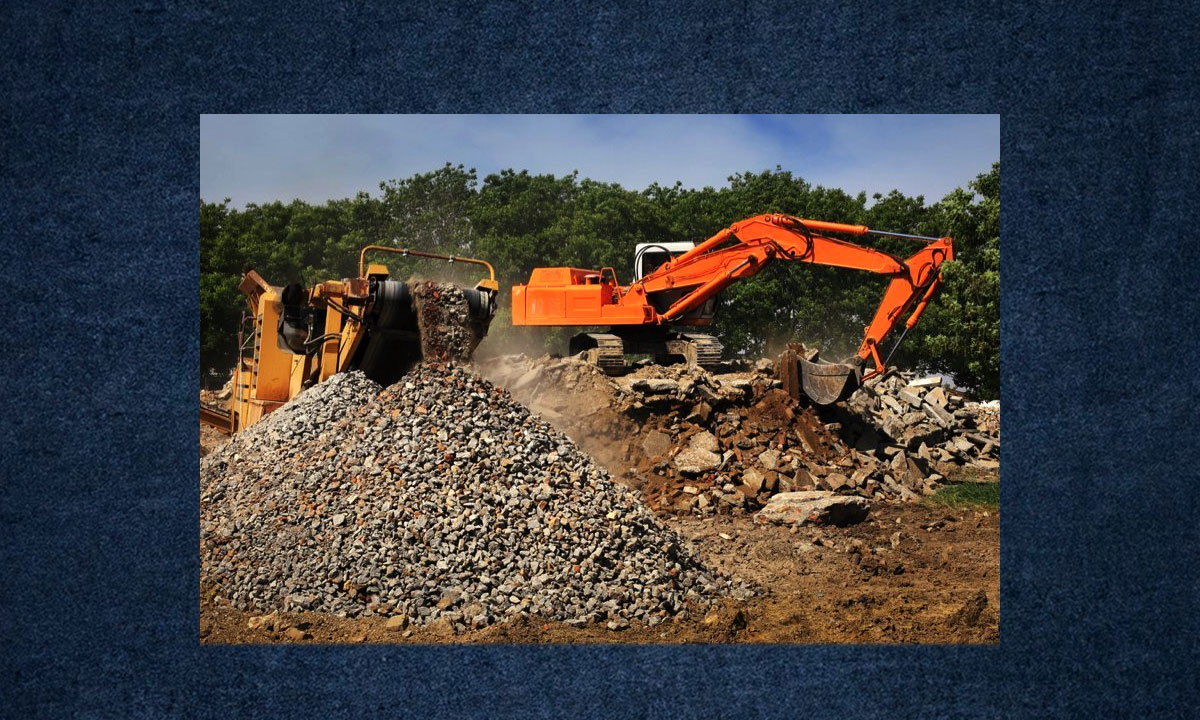
- Source: Crushed and reused concrete from demolition or construction waste.
- Benefits: Reduces the need for new aggregate mining and minimises waste disposal.
Straw Bales:
- Source: Agricultural byproduct – straw.
- Benefits: Excellent insulation material, promotes energy efficiency, and is biodegradable.
Fly Ash Bricks:
- Source: Waste product from coal combustion in power plants.
- Benefits: Replaces traditional clay bricks, reduces environmental impact, and enhances structural strength.
Rammed Earth:
- Source: Local soil mixed with stabilisers such as clay, gravel, or cement.
- Benefits: Low energy consumption during construction, excellent thermal mass, and locally sourced.
Recycled Glass:
- Source: Post-consumer or post-industrial glass waste.
- Benefits: Used in concrete, countertops, and tiles, reducing the need for new raw materials.
Hempcrete: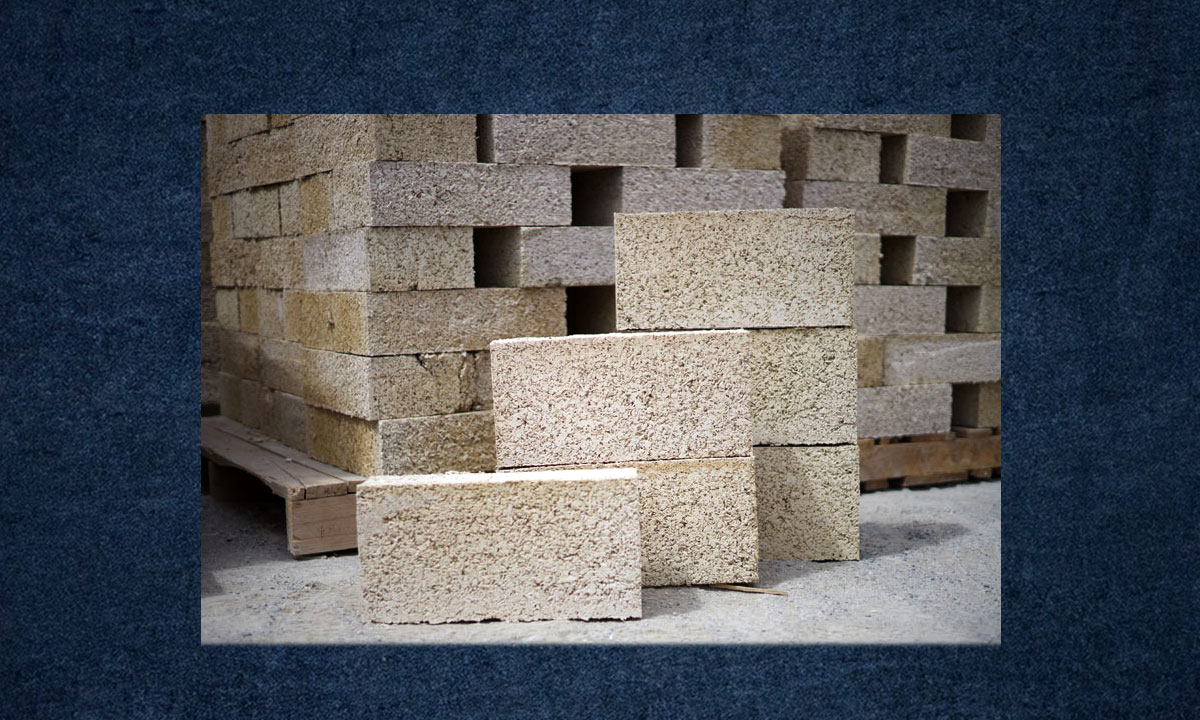
- Source: Hemp fibres mixed with lime and water.
- Benefits: Renewable, lightweight, and provides good insulation properties.
Wood Plastic Composite (WPC):
- Source: Combination of wood fibres and recycled plastic.
- Benefits: Reduces the demand for virgin wood and plastic, used in decking, fencing, and outdoor furniture.
Solar Tiles:
- Source: Photovoltaic cells embedded in roofing tiles.
- Benefits: Generates renewable energy without the need for additional solar panels.
Low VOC Paints and Finishes:
- Source: Paints and finishes with low volatile organic compound content.
- Benefits: Improves indoor air quality by minimising harmful emissions.
Ferro-cement:
- Source: Thin layers of cement mortar applied over a metal mesh.
- Benefits: Requires less concrete, reducing environmental impact, and provides durability.
Recycled Metal Roofing:
- Source: Recycled metal from old cars, appliances, or industrial waste.
- Benefits: Durable, energy-efficient, and reduces the need for new metal production.
Soy-Based Insulation:
- Source: Soybean oil.
- Benefits: Renewable and biodegradable insulation material with low environmental impact.
Cellulose Insulation:
- Source: Recycled paper and cardboard.
- Benefits: Provides an eco-friendly alternative to traditional insulation materials.
Geopolymer Concrete: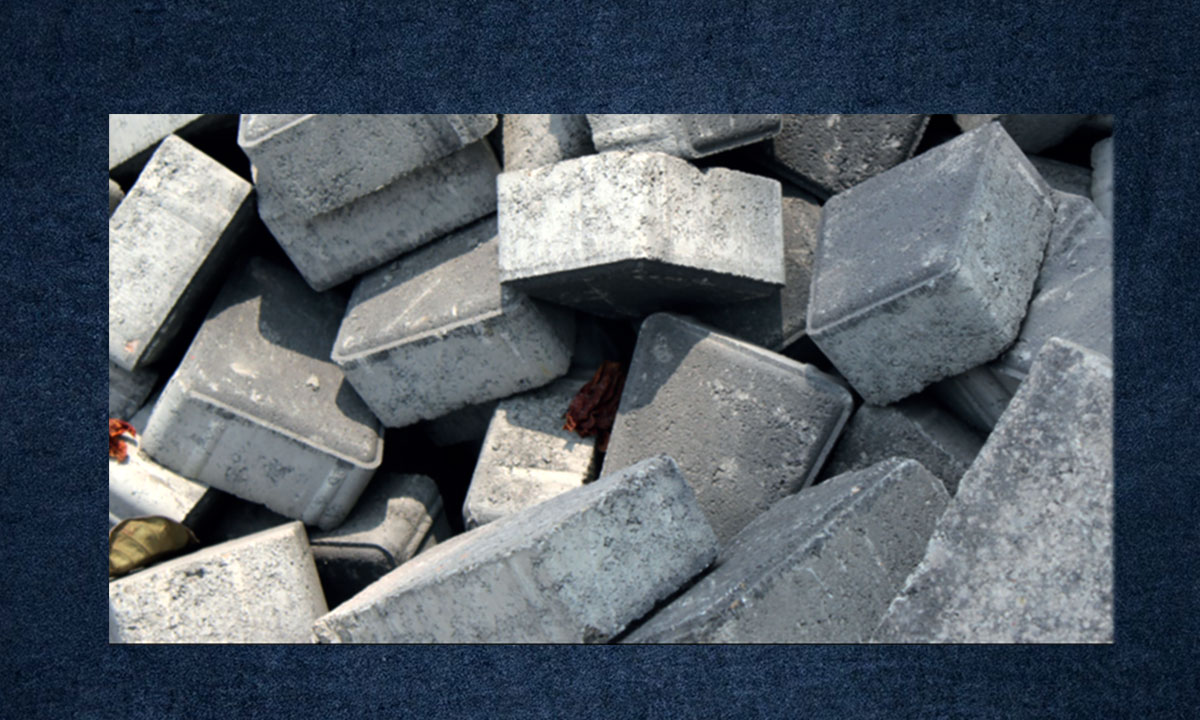
- Source: Industrial byproducts like fly ash or blast furnace slag.
- Benefits: Lower carbon footprint compared to traditional Portland cement.
Permeable Pavers:
- Source: Porous materials such as concrete, brick, or stone.
- Benefits: Allows water to penetrate the surface, reducing stormwater runoff and promoting groundwater recharge.
When selecting eco-friendly construction materials, it's essential to consider factors such as sourcing, energy consumption during production, recyclability, and the overall life cycle environmental impact. Integrating these materials into construction practices contributes to sustainable and environmentally responsible building projects. Sqft.expert makes the best use of eco-friendly materials wherever applicable keeping in mind the environmental factors.
Application of Augmented Reality (AR) and Virtual Reality (VR)
Augmented Reality (AR) and Virtual Reality (VR) have transformative applications in the building construction industry, enhancing various stages of the construction lifecycle. Here are some key applications of AR and VR in building construction:
Augmented Reality (AR):
Project Visualisation:
- Description: AR allows stakeholders to visualise 3D models and construction plans overlaid onto the physical construction site in real-time.
- Benefits: Improved understanding of project design, helping with on-site decision-making and coordination.
Site Planning and Layout:
- Description: AR applications enable precise site planning and layout by overlaying digital information on the physical environment.
- Benefits: Enhanced accuracy in positioning elements like foundations, utilities, and structures during the construction phase.
Construction Progress Monitoring:
- Description: AR facilitates real-time monitoring of construction progress by overlaying digital representations onto the physical building site.
- Benefits: Better tracking of construction milestones, identification of deviations from plans, and improved project management.
Interactive Training and Safety Briefings:
- Description: AR can be used for interactive training sessions and safety briefings by overlaying relevant information and instructions on construction sites.
- Benefits: Enhanced safety awareness, improved training efficiency, and reduced risks.
Equipment Maintenance and Repairs:
- Description: AR can assist construction workers in performing maintenance and repairs on equipment by providing digital overlays with instructions and diagnostics.
- Benefits: Reduced downtime, improved equipment performance, and enhanced maintenance efficiency.
Supply Chain Management:
- Description: AR applications can help streamline the supply chain by providing real-time information on material inventory and logistics.
- Benefits: Improved logistics planning, reduced delays, and optimised material management.
Client Presentations and Marketing:
- Description: AR is used for client presentations, allowing clients to experience a digital representation of the completed project overlaid on a physical model or site.
- Benefits: Improved client engagement, better communication of design concepts, and enhanced marketing.
Virtual Reality (VR):
Immersive Design Review:
- Description: VR enables stakeholders to experience a fully immersive walkthrough of a building's design before construction begins.
- Benefits: Improved design collaboration, early issue identification, and better-informed decision-making.
Training Simulations:
- Description: VR can create realistic training simulations for construction workers, allowing them to practise tasks in a virtual environment.
- Benefits: Enhanced training effectiveness, reduced risks, and improved skill development.
Collaborative Design Meetings:
- Description: VR facilitates collaborative design meetings by allowing multiple stakeholders to interact with and discuss 3D models in a virtual space.
- Benefits: Improved communication, enhanced collaboration, and efficient design iterations.
Safety Training:
- Description: VR can simulate hazardous scenarios, providing construction workers with realistic safety training experiences.
- Benefits: Enhanced safety awareness, reduced on-site accidents, and improved emergency response.
Remote Site Inspections:
- Description: VR can be used to conduct remote site inspections, allowing stakeholders to virtually explore construction sites without being physically present.
- Benefits: Improved accessibility, reduced travel costs, and efficient remote collaboration.
Client Engagement:
- Description: VR applications enable clients to virtually explore and experience a building's interior and exterior, providing a realistic sense of scale and space.
- Benefits: Enhanced client satisfaction, improved project understanding, and better-informed decision-making.
As-Built Documentation:
- Description: VR can be used to create detailed as-built documentation by capturing a virtual representation of the completed construction project.
- Benefits: Simplified facility management, efficient maintenance, and improved asset documentation.
These applications demonstrate how AR and VR technologies are revolutionising the construction industry by providing innovative solutions for design, planning, training, safety, and collaboration throughout the entire construction process. Our company makes use of the AR’s and VR’s to the utmost extent inorder to keep one step ahead kee;ping in mind the current trend in the construction industry.
Robotics in Construction - Best Construction Company in Bangalore
Robotics in home construction is increasingly being used to automate and streamline various tasks, improving efficiency, precision, and safety. Here are some key applications of robotics in home construction:
Bricklaying Robots:
- Description: Robotic systems that can lay bricks with high precision and speed.
- Benefits: Faster construction, consistent quality, and reduced labour costs.
3D Printing Construction Robots: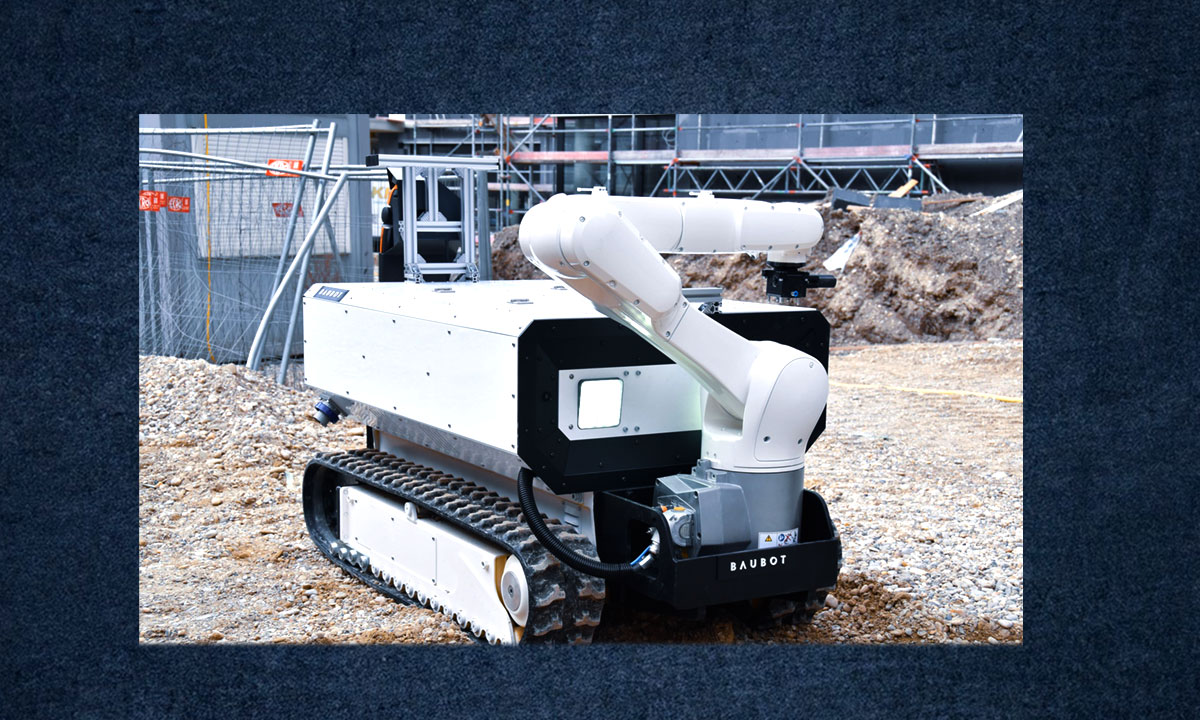
- Description: Large-scale 3D printing robots that can create entire walls or structural components layer by layer.
- Benefits: Rapid construction, reduced material waste, and the ability to create complex geometries.
Automated Masonry and Tiling Robots: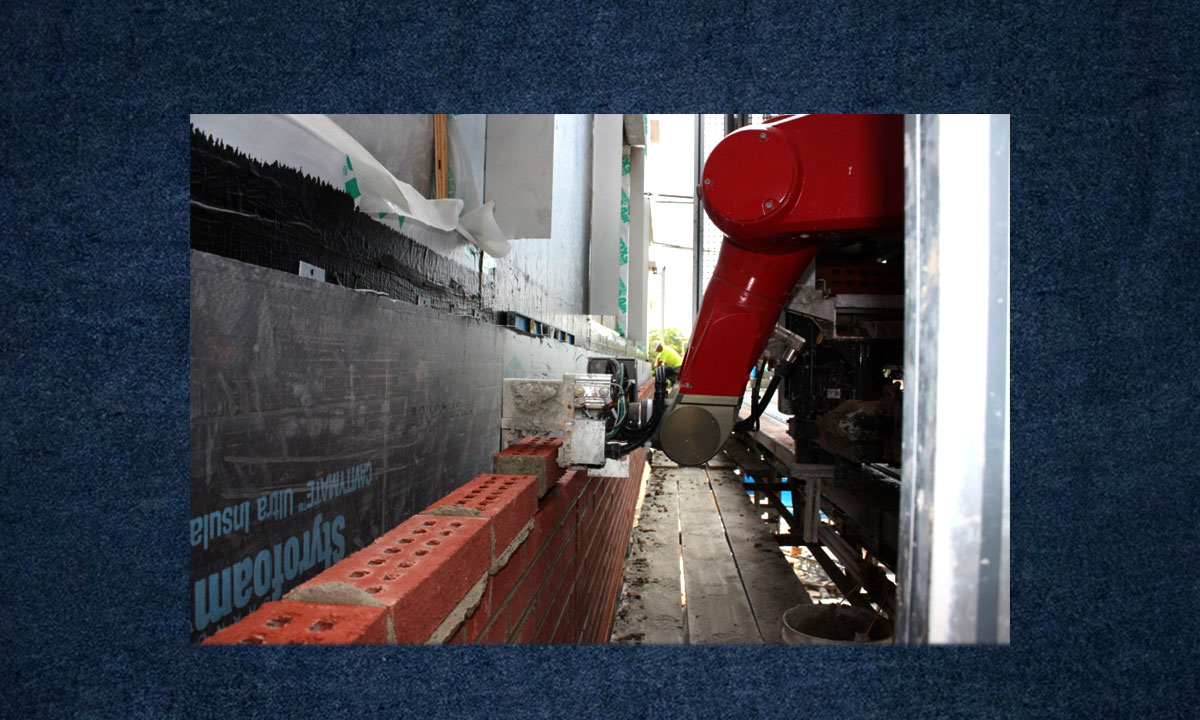
- Description: Robots equipped with advanced sensors and algorithms for tasks such as masonry and tile installation.
- Benefits: Improved precision, faster installation, and reduced manual labour.
Robotic Excavation and Grading:
- Description: Robotic equipment for excavation, grading, and site preparation.
- Benefits: Efficient earthmoving, accurate grading, and reduced manual effort.
Construction Drones:
- Description: Unmanned aerial vehicles (UAVs) equipped with cameras and sensors for surveying and monitoring construction sites.
- Benefits: Improved survey accuracy, efficient site mapping, and real-time progress monitoring.
Autonomous Construction Vehicles:
- Description: Self-driving construction vehicles for tasks like material transport, grading, and excavation.
- Benefits: Improved safety, reduced labour costs, and increased efficiency.
Prefabrication and Assembly Robots:
- Description: Robots designed for assembling prefabricated components, such as wall panels or roof trusses.
- Benefits: Faster assembly, improved quality control, and reduced on-site construction time.
Robotic Welding:
- Description: Robots equipped with welding tools for precise and efficient welding of structural components.
- Benefits: High-quality welds, increased speed, and reduced manual labour.
Robotic Demolition:
- Description: Robots designed for controlled and precise demolition tasks.
- Benefits: Increased safety, reduced risk to human workers, and selective demolition capabilities.
Robotic Concrete Placement:
- Description: Robots equipped with concrete pumps or extruders for precise concrete placement.
- Benefits: Improved accuracy, reduced waste, and increased speed in concrete construction.
Robotic Inspections and Surveys:
- Description: Robots equipped with sensors and cameras for conducting inspections and surveys.
- Benefits: Efficient data collection, early issue detection, and improved safety in hazardous environments.
Smart Robotic Construction Assistants:
- Description: Wearable or mobile robotic devices that assist construction workers with lifting, carrying, or repetitive tasks.
- Benefits: Reduced physical strain on workers, improved safety, and increased productivity.
Automated Brick Recycling Robots:
- Description: Robots designed to disassemble and sort bricks from demolished structures for reuse.
- Benefits: Sustainable building practices, reduced waste, and resource conservation.
Robotic Material Handling:
- Description: Robots equipped for transporting and placing construction materials.
- Benefits: Improved logistics, reduced manual labour, and increased efficiency in material handling.
Robotics in Home Maintenance:
- Description: Small robots designed for tasks like painting, cleaning, or minor repairs.
- Benefits: Reduced maintenance costs, increased safety, and efficient upkeep of the home.
The integration of robotics in home construction not only enhances efficiency and precision but also contributes to improved safety and sustainability in the building process. As technology continues to advance, the role of robotics in construction is likely to expand, further transforming the way homes are built and maintained. We are emerging as one of the top construction companies in Bangalore in recent times.
Drones and Aerial Construction - Best Construction Company in Bangalore
Drones, also known as Unmanned Aerial Vehicles (UAVs), have become invaluable tools in the building construction industry. They offer various applications that enhance efficiency, safety, and data collection throughout different stages of construction projects. Here are some key uses of drones in building construction:
Aerial Surveys and Mapping:
- Application: Drones are used to conduct aerial surveys of construction sites, capturing high-resolution images and generating 3D maps.
- Benefits: Improved site planning, accurate topographical data, and better decision-making based on detailed site analysis.
Site Inspection and Monitoring:
- Application: Drones enable real-time monitoring of construction sites, providing project managers with live video feeds and high-resolution imagery.
- Benefits: Enhanced safety through aerial inspections, faster issue identification, and improved project oversight.
Progress Documentation:
- Application: Drones capture images and videos at regular intervals to create time-lapse documentation of the construction progress.
- Benefits: Effective communication with stakeholders, better project reporting, and documentation for future reference.
Construction Site Security:
- Application: Drones equipped with cameras and sensors enhance security by monitoring construction sites for unauthorised access and potential security threats.
- Benefits: Improved site security, rapid response to incidents, and reduced risk of theft or vandalism.
Material and Equipment Transport:
- Application: Drones can transport small tools, equipment, or lightweight materials across construction sites.
- Benefits: Increased efficiency, reduced manual labour, and faster delivery of essential items to various locations on the site.
Surveying and Geotechnical Assessments:
- Application: Drones equipped with specialised sensors conduct surveys and geotechnical assessments to gather data on soil conditions and terrain.
- Benefits: Faster data collection, reduced costs, and improved accuracy in soil analysis.
Quality Control and Inspection:
- Application: Drones equipped with high-resolution cameras inspect construction elements such as roofs, facades, and structural components.
- Benefits: Efficient inspections, early detection of defects, and improved quality control.
Communication and Documentation:
- Application: Drones provide visual documentation for communication with project stakeholders, including clients, architects, and subcontractors.
- Benefits: Enhanced communication, clearer project updates, and improved collaboration.
Safety Inspections:
- Application: Drones can access difficult-to-reach or hazardous areas to conduct safety inspections, reducing the need for workers to be exposed to potential risks.
- Benefits: Enhanced safety, reduced need for scaffolding or other access methods, and improved compliance with safety regulations.
Environmental Monitoring:
- Application: Drones equipped with environmental sensors can monitor air and water quality, noise levels, and other environmental factors on and around construction sites.
- Benefits: Compliance with environmental regulations, early identification of potential issues, and improved sustainability practices.
Marketing and Presentation:
- Application: Drones capture aerial footage and images for marketing purposes, creating visually compelling presentations for potential clients and stakeholders.
- Benefits: Improved marketing materials, enhanced project visibility, and effective communication of project features.
Emergency Response:
- Application: Drones can quickly survey and assess damage in the aftermath of natural disasters or emergencies, providing critical information for response teams.
- Benefits: Rapid assessment, improved situational awareness, and more efficient emergency response.
The use of drones in construction not only improves operational efficiency but also enhances safety, reduces costs, and provides valuable data for informed decision-making throughout the construction process. As technology continues to advance, the applications of drones in construction are likely to expand, contributing to further advancements in the industry.
Self-Healing Concrete - Benefits & Features - Best Construction Company in Bangalore
Self-healing concrete is an innovative material designed to repair cracks and damages autonomously without external intervention. This technology has the potential to improve the durability and longevity of concrete structures. Here are the key features and benefits of self-healing concrete in construction:
Features of Self-Healing Concrete:
Microcapsules or Vascular Systems:
- Description: Self-healing concrete often incorporates microcapsules containing healing agents or vascular systems that allow the flow of healing agents through the concrete matrix.
- Function: When cracks form, these capsules rupture, releasing healing agents that react with the materials to seal the cracks.
Biological or Chemical Healing Agents:
- Description: Healing agents can be biological (bacteria) or chemical compounds such as urea-formaldehyde.
- Function: These agents react with the components in the concrete, promoting the formation of new material to seal and heal cracks.
Autonomous Activation:
- Description: Self-healing mechanisms are activated automatically when cracks develop, without the need for external intervention.
- Function: This autonomous activation ensures that the healing process occurs in response to damage.
Improved Durability:
- Description: Self-healing concrete enhances the durability of structures by addressing cracks and preventing the penetration of harmful substances.
- Function: Minimises maintenance requirements and extends the lifespan of concrete structures.
Benefits of Self-Healing Concrete in Construction:
Increased Structural Integrity:
- Benefit: Self-healing concrete helps maintain the structural integrity of buildings and infrastructure by addressing cracks before they can compromise the overall stability.
Reduced Maintenance Costs:
- Benefit: The autonomous healing capability reduces the need for frequent repairs and maintenance, resulting in lower overall maintenance costs over the lifespan of the structure.
Extended Service Life:
- Benefit: Structures built with self-healing concrete can have a longer service life, reducing the need for premature replacements and associated costs.
Enhanced Sustainability:
- Benefit: Self-healing concrete contributes to sustainability by minimising the consumption of additional materials for repairs and reducing the environmental impact associated with maintenance activities.
Improved Resistance to Environmental Factors:
- Benefit: Self-healing concrete provides enhanced resistance to environmental factors such as freeze-thaw cycles, chemical exposure, and moisture ingress, thereby reducing the risk of deterioration.
Mitigation of Cracking:
- Benefit: By addressing cracks promptly, self-healing concrete mitigates the potential for further damage, preserving the appearance and functionality of the structure.
Enhanced Safety:
- Benefit: The maintenance of structural integrity contributes to the safety of buildings and infrastructure, reducing the risk of accidents or failures caused by compromised materials.
Application in Harsh Environments:
- Benefit: Self-healing concrete is particularly useful in environments with harsh conditions, such as marine structures or locations with high levels of pollution.
Minimised Disruptions:
- Benefit: Reduced need for disruptive repair work allows for continuous use of structures without major interruptions, which is particularly beneficial in critical infrastructure projects.
Versatility in Applications:
- Benefit: Self-healing concrete can be used in various construction applications, including buildings, bridges, tunnels, and other infrastructure projects, enhancing the overall resilience of these structures.
While self-healing concrete represents a promising technology, it is essential to note that research and development are ongoing to optimise its effectiveness, address scalability, and ensure economic feasibility for widespread adoption in the construction industry.
Application of Nanotechnology in Home Construction - Best Construction Company in Bangalore
Nanotechnology, which involves manipulating materials at the nanoscale level (typically at dimensions less than 100 nanometers), has several potential applications in home construction. These applications can enhance the properties of construction materials, improve energy efficiency, and contribute to the development of smart and sustainable homes. Here are some key applications of nanotechnology in home construction:
Self-Cleaning Surfaces:
- Application: Nanocoatings with photocatalytic properties can be applied to building surfaces, making them self-cleaning by breaking down organic pollutants when exposed to light.
Water-Repellent and Waterproofing Agents:
- Application: Nanotechnology can be used to create water-repellent and waterproofing agents for building materials, preventing water ingress and enhancing the durability of structures.
High-Performance Insulation:
- Application: Nanomaterials, such as aerogels or nanoporous materials, can be used as highly efficient insulation to improve thermal performance and reduce energy consumption in homes.
Stronger and Lighter Construction Materials:
- Application: Incorporating nanomaterials like carbon nanotubes or graphene into concrete and other construction materials can enhance their strength and reduce weight.
Transparent Solar Panels:
- Application: Nanotechnology can contribute to the development of transparent solar panels, which can be integrated into windows or building facades to generate electricity without obstructing light.
Smart Windows with Nanocoatings:
- Application: Nanocoatings on windows can dynamically control light transmission, block UV rays, and improve energy efficiency by reducing the need for heating or cooling.
Air Purification Systems:
- Application: Nanomaterials like titanium dioxide can be used in coatings to break down air pollutants, contributing to improved indoor air quality.
Flexible and Durable Nanocomposite Materials:
- Application: Nanocomposite materials with enhanced flexibility and durability can be used in various applications, such as roofing materials, flooring, and structural components.
Improved Concrete Performance:
- Application: Adding nanoparticles to concrete can enhance its properties, including strength, durability, and resistance to environmental factors such as corrosion.
Nanogel-Based Thermal Storage:
- Application: Nanogels with high thermal storage capacities can be integrated into building materials to enhance their ability to store and release heat, contributing to improved energy efficiency.
Antimicrobial Coatings:
- Application: Nanotechnology can be used to create coatings with antimicrobial properties, helping to inhibit the growth of bacteria and fungi on surfaces in homes.
Smart Sensors for Structural Health Monitoring:
- Application: Nanosensors embedded in building materials can be used for real-time structural health monitoring, providing early detection of potential issues or structural damage.
Energy-Efficient Lighting:
- Application: Nanotechnology contributes to the development of energy-efficient lighting solutions, such as nanophosphors in LED lights, improving illumination while reducing energy consumption.
Fire-Resistant Materials:
- Application: Nanotechnology can be used to enhance the fire resistance of materials, improving the safety of homes by reducing the risk of fire spread.
Improved Paints and Coatings:
- Application: Nanoparticles in paints and coatings can enhance their adhesion, durability, and resistance to environmental factors, providing longer-lasting protection for building surfaces.
As nanotechnology continues to advance, these applications have the potential to significantly impact the construction industry by creating more sustainable, energy-efficient, and durable homes. It's important to note that ongoing research and development are essential to further refine these technologies and ensure their practical implementation in construction practices.
Lightweight Construction Techniques - Best Construction Company in Bangalore
Lightweight construction techniques aim to reduce the weight of building structures while maintaining or improving structural integrity, energy efficiency, and overall performance. These techniques are particularly relevant for applications where weight is a critical factor, such as in high-rise buildings, transportation infrastructure, and areas with poor soil conditions. Here are some common lightweight construction techniques:
Lightweight Concrete:
- Description: Lightweight concrete is produced by incorporating lightweight aggregates, such as expanded clay, shale, or volcanic materials, into the mix.
- Benefits: Reduced overall weight, improved thermal insulation, and potential cost savings in transportation and construction.
Structural Insulated Panels (SIPs):
- Description: SIPs consist of a foam core sandwiched between two structural facings, typically oriented strand board (OSB) or plywood.
- Benefits: Lightweight, high strength, and excellent insulation properties. SIPs are commonly used for walls, roofs, and floors.
Lightweight Steel Framing:
- Description: Lightweight steel framing involves using thin-gauge steel studs and joists for framing instead of traditional wood.
- Benefits: Reduced weight, resistance to rot and pests, and increased strength. It is commonly used in commercial and residential construction.
Fibre-Reinforced Polymers (FRP):
- Description: FRP composites, including carbon or glass fibres embedded in a polymer matrix, are used for structural elements like beams, columns, and panels.
- Benefits: High strength-to-weight ratio, corrosion resistance, and ease of installation. FRP is often used for retrofitting existing structures.
Honeycomb Core Panels:
- Description: These panels consist of a honeycomb-like core (typically aluminium or polymer) sandwiched between thin facing materials.
- Benefits: Extremely lightweight with good strength, commonly used for wall cladding, doors, and partitions.
Lightweight Aggregates:
- Description: Lightweight aggregates, such as expanded clay, shale, or perlite, can be used in concrete mixes to reduce overall density.
- Benefits: Lower weight, improved insulation properties, and potential cost savings.
Foamed Concrete:
- Description: Foamed concrete is produced by introducing air bubbles into a cementitious mix, resulting in a lightweight and highly insulating material.
- Benefits: Low density, good thermal insulation, and the ability to fill voids and irregular spaces.
Bamboo Construction:
- Description: Bamboo, a rapidly renewable material, is used for construction in some regions. Engineered bamboo products, such as laminated bamboo, offer additional strength and stability.
- Benefits: Lightweight, sustainable, and high tensile strength. Bamboo is used for various structural and non-structural applications.
Lightweight Masonry Blocks:
- Description: Masonry blocks made from lightweight aggregates, such as expanded clay or pumice, are lighter than traditional concrete blocks.
- Benefits: Reduced weight, improved insulation, and ease of handling during construction.
Aerated Concrete:
- Description: Aerated concrete is produced by introducing air bubbles into a cementitious mix, resulting in a lightweight material with a cellular structure.
- Benefits: Low density, good thermal insulation, and ease of cutting and shaping. Commonly used for blocks, panels, and precast elements.
PVC and Foam-Based Materials:
- Description: PVC (polyvinyl chloride) and foam-based materials are used for certain construction elements, such as pipes, panels, and profiles.
- Benefits: Lightweight, durable, and resistant to moisture and chemicals.
Thermal Insulation Systems:
- Description: Exterior thermal insulation systems involve adding lightweight insulation materials, such as expanded polystyrene (EPS) or mineral wool, to the exterior of buildings.
- Benefits: Improved energy efficiency, reduced thermal bridging, and enhanced comfort.
These lightweight construction techniques offer a range of benefits, including improved energy efficiency, ease of construction, and cost-effectiveness. The choice of technique depends on the specific requirements of the project, the local building codes, and environmental considerations.
Safety Standards in Building Constructions - Best Construction Company in Bangalore
Safety standards in building construction are crucial to ensuring the well-being of workers, occupants, and the general public. These standards are established by regulatory bodies and organisations to set guidelines and requirements for safe construction practices. Here are some key safety standards commonly followed in building construction:
National Building Codes (NBC) provide guidelines for construction practices, including safety standards. These codes cover structural design, fire safety, electrical systems, plumbing, and other aspects of building construction.
Building construction has a significant impact on the surrounding community, influencing various aspects such as the local economy, environment, social dynamics, and overall quality of life. The community impact can be both positive and negative, depending on factors like the nature of the construction project, community engagement, and the implementation of sustainable practices. Here are some key ways in which building construction can impact the community:
Economic Impact:
- Positive Impact: Construction projects stimulate the local economy by creating job opportunities for construction workers, engineers, architects, and other related professionals. Additionally, local businesses may benefit from increased demand for goods and services during the construction phase.
- Negative Impact: Construction activities can temporarily disrupt local businesses, especially if there are road closures or limitations on access to certain areas. Noise, dust, and traffic congestion may also affect nearby businesses negatively.
Employment Opportunities:
- Positive Impact: Construction projects create employment opportunities for local residents, contributing to economic development and reducing unemployment rates.
- Negative Impact: In some cases, construction projects may rely on non-local labour, limiting the direct economic benefits for the local community.
Housing Affordability:
- Positive Impact: New construction projects can contribute to increasing the housing supply, potentially addressing housing shortages and making homeownership more accessible.
- Negative Impact: High-end or luxury developments may contribute to gentrification, pushing property values and rents higher and displacing existing residents.
Infrastructure Improvement:
- Positive Impact: Construction of new infrastructure, such as roads, bridges, and public facilities, enhances the overall quality of life in the community by improving connectivity, accessibility, and public services.
- Negative Impact: Construction activities can cause temporary inconveniences, including road closures and detours, affecting the daily lives of residents.
Environmental Impact:
- Positive Impact: Sustainable construction practices, such as using green building materials and implementing energy-efficient technologies, can minimise the environmental footprint and contribute to long-term ecological sustainability.
- Negative Impact: Poorly managed construction sites may lead to soil erosion, water pollution, and habitat disruption, impacting local ecosystems.
Community Engagement:
- Positive Impact: Involving the community in the planning and design phases of construction projects fosters a sense of ownership and allows residents to contribute to the development of their neighbourhoods.
- Negative Impact: Lack of communication and community engagement can lead to opposition, protests, or legal challenges, delaying construction projects and creating tensions.
Cultural Preservation:
- Positive Impact: Preservation of historic buildings and cultural landmarks in construction projects contributes to maintaining the community's cultural identity and heritage.
- Negative Impact: Neglect or demolition of historic structures can result in the loss of cultural assets, eroding the community's historical character.
Public Space Enhancement:
- Positive Impact: Construction projects that include the development or enhancement of public spaces, parks, and recreational areas contribute to the well-being and social cohesion of the community.
- Negative Impact: Temporary disruptions during construction may limit access to existing public spaces, impacting residents' recreational activities.
Traffic and Accessibility:
- Positive Impact: Well-planned construction projects can improve transportation infrastructure, reducing traffic congestion and enhancing overall accessibility.
- Negative Impact: Construction-related road closures, detours, and increased traffic can inconvenience residents and businesses, affecting daily commutes and local commerce.
Health and Safety:
- Positive Impact: Implementing safety measures on construction sites protects workers and residents, minimising the risk of accidents and injuries.
- Negative Impact: Poor safety practices can lead to accidents, injuries, or even fatalities, negatively impacting both workers and the community.
To mitigate negative impacts and maximise positive outcomes, effective community engagement, transparent communication, and adherence to sustainable construction practices are essential. Inclusive planning and collaboration between developers, local authorities, and community members can lead to construction projects that contribute positively to the well-being and prosperity of the community.
Employee Welfare in Building Construction - Best Construction Company in Bangalore
Employee welfare in building construction is a critical aspect of managing construction projects responsibly and ethically. Ensuring the well-being, safety, and overall satisfaction of construction workers contributes to a positive work environment, increased productivity, and a more sustainable construction industry. Here are key considerations for promoting employee welfare in building construction:
Occupational Health and Safety:
- Safety Training: Provide comprehensive safety training for all construction workers, including information on the proper use of equipment, handling hazardous materials, and emergency procedures.
- Safety Equipment: Ensure that workers have access to and use appropriate personal protective equipment (PPE) to minimise the risk of injuries.
Safe Working Conditions:
- Site Organisation: Maintain an organised and clutter-free construction site to reduce the risk of accidents and improve overall safety.
- Regular Inspections: Conduct regular safety inspections to identify and address potential hazards promptly.
Fair Compensation and Benefits:
- Competitive Wages: Offer fair and competitive wages that align with industry standards and provide workers with a living wage.
- Benefits Package: Provide a comprehensive benefits package that may include health insurance, retirement plans, and other perks to support the financial well-being of employees.
Work-Life Balance:
- Reasonable Working Hours: Establish reasonable working hours to prevent employee burnout and fatigue, which can impact both safety and job satisfaction.
- Overtime Policies: Clearly communicate policies related to overtime work, ensuring compliance with labour laws and the well-being of workers.
Training and Skill Development:
- Training Programs: Invest in ongoing training and skill development programs to enhance the capabilities of construction workers, providing opportunities for career growth.
- Cross-Training: Offer cross-training opportunities to allow workers to acquire additional skills within the construction industry.
Health and Wellness Programs:
- Medical Services: Provide access to medical services and regular health check-ups for construction workers.
- Wellness Initiatives: Implement wellness initiatives, such as fitness programs or mental health support, to promote overall well-being.
Safe and Adequate Accommodations:
- Temporary Housing: If workers are required to stay on-site, ensure that temporary housing meets health and safety standards.
- Sanitary Facilities: Provide clean and well-maintained sanitary facilities, including restrooms and bathing areas.
Anti-Discrimination and Harassment Policies:
- Equal Opportunity: Promote equal opportunity and non-discrimination in hiring, promotions, and workplace practices.
- Anti-Harassment Policies: Implement and enforce policies to prevent harassment and ensure a respectful work environment.
Communication and Feedback Channels:
- Open Communication: Foster open communication between management and construction workers, allowing them to voice concerns or suggestions.
- Feedback Mechanisms: Establish feedback mechanisms to assess employee satisfaction and identify areas for improvement.
Employee Recognition and Appreciation:
- Recognition Programs: Implement employee recognition programs to acknowledge and reward outstanding performance.
- Appreciation Events: Organise events or activities to express appreciation for the hard work and dedication of construction workers.
Emergency Preparedness:
- Emergency Response Plans: Develop and communicate emergency response plans to address situations such as accidents, natural disasters, or other emergencies.
- First Aid Training: Ensure that construction workers receive basic first aid training to respond to minor injuries promptly.
Social Responsibility:
- Community Engagement: Encourage construction projects to engage with and contribute positively to the local community, fostering a sense of pride among workers.
- Sustainable Practices: Implement environmentally sustainable construction practices that demonstrate a commitment to social responsibility.
Legal Compliance:
- Labour Laws: Ensure compliance with labour laws and regulations related to wages, working hours, safety standards, and employee rights.
- Licensing and Certifications: Verify that construction workers have the necessary licences and certifications to perform their jobs safely and legally.
By prioritising employee welfare in building construction, companies can create a positive work environment, attract and retain skilled workers, and contribute to the overall success and sustainability of the construction industry. Employee welfare practices not only benefit workers directly but also positively impact the reputation and success of construction projects and organisations.
Client Communication and Transparency in Home Construction
Client communication and transparency are essential elements in building construction projects. Effective communication and transparency contribute to client satisfaction, trust, and successful project outcomes. Here are key principles and strategies to enhance client communication and transparency in building construction:
Clear Project Documentation:
- Detailed Contracts: Provide comprehensive contracts that clearly outline project scope, timelines, costs, and responsibilities. Ensure clients have a thorough understanding of the terms and conditions.
Project Planning Meetings:
- Kick-off Meetings: Conduct project kick-off meetings to review project goals, timelines, and expectations with clients. This sets the tone for open communication from the start.
Regular Progress Updates:
- Scheduled Updates: Establish a regular schedule for progress updates, whether through meetings, reports, or online platforms. Keep clients informed about project milestones, achievements, and any potential challenges.
Transparency in Budgeting:
- Detailed Budget Breakdowns: Provide clients with detailed breakdowns of project costs, including materials, labour, and any contingency amounts. Transparency in budgeting builds trust and helps manage client expectations.
Realistic Timelines:
- Clear Timelines: Set realistic and achievable project timelines. Keep clients informed about any adjustments to the schedule, and provide reasons for changes.
Change Orders and Variations:
- Prompt Notification: If changes to the scope of work are necessary, promptly notify clients and clearly outline the impact on timelines and costs. Obtain written approval for any variations.
Digital Project Management Tools:
- Collaborative Platforms: Use digital project management tools to facilitate collaboration and transparency. Clients can access project updates, documents, and communications in real time.
Open Communication Channels:
- Accessible Contacts: Provide clients with accessible contacts within the construction team. Clearly communicate what clients should contact for specific types of inquiries or updates.
Responsive Communication:
- Timely Responses: Respond promptly to client inquiries or concerns. Even if an immediate solution is not available, acknowledge the query and provide a timeline for resolution.
Site Visits and Tours:
- Client Access: Arrange regular site visits or tours to allow clients to see the progress firsthand. This fosters a sense of involvement and helps clients visualise the end result.
Quality Assurance Updates:
- Quality Reports: Provide clients with regular quality assurance reports. Highlight the steps taken to ensure the highest standards of construction quality.
Risk Management Discussions:
- Risk Assessments: Discuss potential risks and challenges openly with clients. Present risk assessments and propose mitigation strategies to demonstrate proactive management.
Client Feedback Sessions:
- Feedback Opportunities: Create opportunities for client feedback throughout the project. Use feedback sessions to address concerns, make improvements, and strengthen the client-contractor relationship.
Transparency in Subcontractor Relationships:
- Subcontractor Communication: Clearly communicate the roles and responsibilities of subcontractors. Inform clients about subcontractor involvement and their qualifications.
Documentation of Decisions:
- Meeting Minutes: Document decisions made during meetings and share minutes with clients. This helps in avoiding misunderstandings and serves as a reference point.
Final Walkthrough and Handover:
- Detailed Handover: Conduct a thorough final walkthrough with clients, addressing any outstanding concerns. Provide comprehensive documentation and instructions for maintenance, if applicable.
Post-Completion Support:
- Warranty Information: Clearly communicate warranty details and post-completion support. Provide clients with information on how to address any issues that may arise after project completion.
Education and Training:
- User Training: If applicable, provide training to clients on the operation and maintenance of specific systems or features in the completed building.
Effective client communication and transparency are ongoing processes that require attention throughout the project lifecycle. By adopting these principles and strategies, construction professionals can build strong relationships with clients, foster trust, and enhance overall project success. Sqft.expert have built a cordial relationship with both existing and ongoing clients. That is the reason why we are one of the top 10 construction companies in Bangalore.
Risk Management Strategies in Building Construction - Best Construction Company in Bangalore
Risk management is a crucial aspect of building construction to identify, assess, and mitigate potential risks that can impact the project's success. Implementing effective risk management strategies helps minimise the likelihood of negative events and their potential impact. Here are key risk management strategies in building construction:
Comprehensive Risk Assessment:
- Identification: Identify and document potential risks at the beginning of the project. This includes risks related to design, construction, environmental factors, regulatory compliance, and external influences.
Risk Quantification and Prioritization:
- Quantification: Assign quantitative values to risks where possible, such as estimating the probability of occurrence and potential impact on cost and schedule.
- Prioritisation: Prioritise risks based on their significance, focusing on those with the highest potential impact.
Risk Ownership and Responsibility:
- Assignment: Clearly assign ownership of each identified risk to responsible individuals or teams.
- Accountability: Ensure that those responsible for specific risks are accountable for their management and mitigation.
Risk Mitigation Planning:
- Development of Mitigation Plans: Develop specific mitigation plans for high-priority risks. These plans should outline actions to reduce the probability and impact of the identified risks.
Contingency Planning:
- Establish Contingency Reserves: Set aside contingency reserves for time and cost to address unforeseen risks. This provides a buffer in case certain risks materialise.
Regular Risk Reviews:
- Scheduled Reviews: Conduct regular reviews of identified risks throughout the project life cycle. Update risk assessments and mitigation plans as the project progresses.
Communication and Reporting:
- Transparent Communication: Maintain transparent communication with stakeholders regarding identified risks, their potential impact, and the progress of mitigation efforts.
- Reporting: Provide regular risk reports to keep stakeholders informed about the status of risks and mitigation strategies.
Contractual Risk Allocation:
- Risk Allocation in Contracts: Clearly define risk allocation in contracts. Specify which party is responsible for specific risks and how liabilities will be managed.
Insurance Coverage:
- Insurance Policies: Obtain appropriate insurance coverage to protect against potential financial losses associated with specific risks, such as property damage or liability claims.
Design and Construction Standards:
- Adherence to Standards: Ensure that design and construction activities adhere to established industry standards and codes. Compliance can help mitigate certain types of risks.
Legal and Regulatory Compliance:
- Compliance Monitoring: Regularly monitor and ensure compliance with local, regional, and national legal and regulatory requirements. Non-compliance can pose significant risks.
Quality Control and Assurance:
- Quality Programs: Implement robust quality control and assurance programs to minimise the risk of defects or deficiencies in construction work, reducing rework and associated costs.
Financial Risk Management:
- Financial Planning: Develop a comprehensive financial plan that includes budgeting, cost monitoring, and financial risk assessments.
- Financial Contingency: Maintain a financial contingency fund to cover unexpected costs arising from identified risks.
Technology and Innovation Risks:
- Pilot Testing: When implementing new technologies or innovative construction methods, conduct pilot testing to identify and address potential risks before full-scale deployment.
Supply Chain Management:
- Diversification: Diversify suppliers and subcontractors to reduce dependence on a single source. Monitor the reliability and performance of key suppliers.
Environmental and Sustainability Risks:
- Environmental Impact Assessments: Conduct thorough environmental impact assessments to identify and address risks related to environmental compliance and sustainability.
Stakeholder Engagement:
- Engagement Strategies: Engage with key stakeholders, including the local community, to understand and address concerns, minimising the risk of opposition or delays.
Emergency Response Planning:
- Emergency Protocols: Develop and communicate emergency response plans to address unexpected events, ensuring the safety of workers and minimising potential damages.
By implementing these risk management strategies, construction professionals can proactively address potential challenges, reduce uncertainties, and enhance the overall success and resilience of building construction projects. Regular monitoring and adaptation of strategies throughout the project life cycle are essential for effective risk management.
Supplier and Material Management in Home Construction - Best Construction Company in Bangalore
Supplier and material management in home construction involves the effective sourcing, procurement, and control of materials necessary for the construction of residential structures. Efficient management in this area is crucial for maintaining project timelines, controlling costs, and ensuring the quality of the final construction. Here are key aspects of supplier and material management in home construction:
Supplier Selection:
- Qualification Criteria: Establish criteria for selecting suppliers, considering factors such as reputation, reliability, product quality, delivery capabilities, and pricing.
- Supplier Audits: Conduct audits or assessments to ensure that selected suppliers meet the necessary standards and have the capacity to fulfil orders.
Vendor Relationships:
- Communication: Maintain open and transparent communication with suppliers. Establish a collaborative relationship to address challenges and changes promptly.
- Long-Term Partnerships: Foster long-term partnerships with reliable suppliers to ensure a stable and consistent supply chain.
Material Specifications:
- Detailed Specifications: Clearly define material specifications in project documentation. This includes quality standards, sizes, grades, and any specific requirements for construction materials.
- Standards Compliance: Ensure that all materials supplied comply with relevant industry standards and local building codes.
Cost Negotiation and Transparency:
- Negotiation: Negotiate pricing and terms with suppliers to achieve favourable terms while maintaining quality standards.
- Cost Transparency: Maintain transparency in cost breakdowns, including material costs, transportation, and any additional fees.
Material Procurement Planning:
- Timely Procurement: Develop a procurement plan that aligns with the project schedule to avoid delays. Ensure that materials are procured in a timely manner to meet construction milestones.
- Forecasting: Use accurate forecasting techniques to estimate material requirements, taking into account the project's scope and schedule.
Quality Control and Assurance:
- Inspection Protocols: Implement rigorous quality control measures. Regularly inspect materials upon delivery to verify compliance with specifications and quality standards.
- Testing Procedures: Conduct necessary tests on materials, especially critical components like concrete, steel, and insulation, to ensure they meet required standards.
Inventory Management:
- Just-In-Time Inventory: Adopt just-in-time inventory practices to minimise storage costs and prevent overstocking.
- Effective Storage: When storage is necessary, ensure that materials are stored properly to prevent damage and deterioration.
Risk Management:
- Risk Assessment: Conduct risk assessments related to material availability, price fluctuations, and supplier reliability. Develop strategies to mitigate identified risks.
- Alternative Suppliers: Identify alternative suppliers to minimise disruptions in case of unforeseen issues with primary suppliers.
Green and Sustainable Sourcing:
- Sustainability Considerations: Consider the environmental impact of construction materials. Opt for sustainable and eco-friendly options where possible.
- Certifications: Prioritise suppliers with certifications for environmentally friendly and sustainable practices.
Logistics and Transportation:
- Efficient Logistics: Plan and optimise logistics to minimise transportation costs and ensure timely deliveries.
- Delivery Coordination: Coordinate with suppliers for efficient delivery scheduling, considering construction site access and project timelines.
Payment Terms and Invoicing:
- Clear Terms: Clearly define payment terms in contracts with suppliers. Ensure that both parties understand invoicing procedures and payment schedules.
- Prompt Payments: Adhere to agreed-upon payment schedules to maintain good relationships with suppliers and encourage prompt deliveries.
Technology Integration:
- Supply Chain Software: Implement supply chain management software to streamline procurement processes, monitor inventory, and enhance communication with suppliers.
- Digital Platforms: Explore online platforms for ordering and tracking materials, improving efficiency in the procurement process.
Contract Management:
- Clear Contracts: Develop clear and comprehensive contracts with suppliers, specifying terms and conditions, quality requirements, and penalties for non-compliance.
- Regular Contract Reviews: Regularly review contracts to ensure that both parties are meeting their obligations and adjust terms as needed.
Document Control:
- Documentation Standards: Establish consistent documentation standards for material orders, deliveries, and inspections.
- Digital Recordkeeping: Implement digital recordkeeping systems for easy retrieval of information related to material orders, invoices, and quality control records.
Community and Local Sourcing:
- Local Suppliers: Consider sourcing materials locally to support the community and reduce transportation costs.
- Community Engagement: Engage with local suppliers and communities to foster positive relationships and contribute to local economies.
Effective supplier and material management are integral to the overall success of home construction projects. By implementing these strategies, construction professionals can optimise the supply chain, control costs, and ensure the timely and high-quality delivery of materials for residential construction.
Post Construction Services - Best Construction Company in Bangalore
Post-construction services are essential for ensuring the satisfaction of homeowners and maintaining the integrity and functionality of a newly built home. Offering comprehensive post-construction services demonstrates a commitment to quality, customer care, and long-term relationships with clients. Here are key post-construction services that can be provided in home building:
Final Walkthrough and Inspection:
- Conduct a thorough final walkthrough with the homeowner to identify any remaining issues or concerns.
- Address and resolve any cosmetic or minor defects identified during the inspection.
Documentation and Manuals:
- Provide the homeowner with comprehensive documentation, including manuals for appliances, systems, and equipment installed in the home.
- Include information on maintenance schedules and procedures.
Warranty Services:
- Clearly communicate and uphold warranty terms and conditions.
- Establish a system for homeowners to report warranty-related issues, and promptly address and resolve any covered concerns.
Homeowner Orientation:
- Conduct a homeowner orientation session to familiarise residents with the home's features, systems, and controls.
- Provide guidance on regular maintenance tasks and troubleshooting common issues.
Maintenance Plans:
- Offer optional maintenance plans that include regular inspections and servicing of key systems (HVAC, plumbing, electrical) to ensure optimal performance.
- Provide homeowners with a schedule for routine maintenance tasks.
Energy Efficiency Audits:
- Conduct energy efficiency audits to identify opportunities for energy savings.
- Recommend and implement improvements, such as insulation upgrades, energy-efficient lighting, or smart home technologies.
Landscaping and Outdoor Services:
- Provide landscaping services for the maintenance of lawns, gardens, and outdoor spaces.
- Offer seasonal services, such as leaf removal, irrigation system maintenance, and snow removal.
Home Security Services:
- Offer home security system installations and monitoring services.
- Provide guidance on home security best practices, including door and window locks and smart security solutions.
Smart Home Technology Integration:
- Offer the integration of smart home technologies, such as smart thermostats, lighting systems, and security systems.
- Provide training on the use of smart home devices and troubleshoot any issues.
Interior Design and Styling Services:
- Offer interior design and styling services to help homeowners personalise their living spaces.
- Provide recommendations for furniture placement, decor, and design elements.
Customization and Renovation Services:
- Offer post-construction customization services for homeowners who wish to make changes or additions to their homes.
- Provide design and construction services for home renovations or expansions.
Community Engagement:
- Establish ongoing communication channels with homeowners through newsletters, community events, and online platforms.
- Encourage homeowners to provide feedback and suggestions for continuous improvement.
Emergency Response Planning:
- Provide guidance on emergency response plans, including evacuation procedures and contact information for local emergency services.
- Conduct periodic safety drills for homeowners to ensure preparedness.
- Homeowner Education Programs:
- Conduct educational programs or workshops on topics relevant to homeowners, such as home safety, energy conservation, and smart home technology usage.
- Provide resources and guides on home maintenance and improvement.
Community Building Activities:
- Organise community-building activities, such as neighbourhood events, social gatherings, or homeowner association meetings.
- Foster a sense of community and connection among homeowners.
Sustainable Living Initiatives:
- Offer guidance on sustainable living practices, including recycling programs, water conservation, and energy-efficient habits.
- Implement green building initiatives and certifications.
Regular Check-ins:
- Schedule regular check-ins with homeowners to address any concerns, gather feedback, and ensure ongoing satisfaction.
- Use surveys or feedback forms to gather insights into the homeowner experience.
By providing these post-construction services, home builders can create a positive and lasting relationship with homeowners, contribute to the long-term well-being of the community, and differentiate themselves in a competitive market. Consistent and thoughtful post-construction services contribute to customer satisfaction and can lead to referrals and positive reviews.
Sqft.expert also provides the best UPVC windows and doors in Bangalore. We are one of the leading manufacturers and suppliers of premium UPVC windows and doors. UPVC windows give your home a flawless look and enhance the aesthetic appeal of your dream home. To know more about UPVC product range, do speak to our experts or visit us at https://upvc.expert
Challenges Faced by Construction Companies in Bangalore
Bangalore’s construction industry is booming, driven by rapid urbanization and infrastructure development. However, construction companies face several challenges that impact project timelines, costs, and overall efficiency. Key issues include land acquisition and regulatory hurdles, rising costs of raw materials and labour, and urbanization and space constraints.
1. Land Acquisition and Regulatory Hurdles
Acquiring land for construction in Bangalore is one of the biggest challenges due to legal complexities, unclear land titles, and lengthy approval processes. Many construction companies struggle with disputes over land ownership, zoning laws, and obtaining necessary permits from municipal authorities. These delays not only increase project costs but also slow down real estate and infrastructure growth.
2. Rising Costs of Raw Materials and Labour
The cost of raw materials such as cement, steel, bricks, and sand has been steadily increasing due to demand-supply fluctuations and inflation. Additionally, the rising wages of skilled and unskilled labour further escalate construction expenses. Companies must balance cost efficiency with quality while ensuring timely project completion. This financial burden often leads to budget overruns and reduced profit margins for developers.
3. Urbanization and Space Constraints
Bangalore’s rapid expansion has resulted in land shortages and congestion, making it difficult for construction firms to find suitable locations for new projects. In densely populated areas, limited space restricts large-scale developments, and strict zoning regulations further complicate matters. Managing traffic disruptions and ensuring proper infrastructure connectivity adds another layer of complexity to urban construction.
Conclusion
Selecting the right construction company to construct your dream home is one of the most important decisions you need to make. At Sqft.expert, we are a well-known name among the top construction companies in Bangalore. Our team includes technical experts, site engineers, architects, project managers, procurement team, and labourers. We offer comprehensive project management and construction services. We are known for our expertise in delivering flawless end-to-end services. Our team consists of expert professionals who pay close attention to every detail of the project to create the best infrastructure.
FAQs - Best Construction Company in Bangalore
- Q: How long does it take to build a house from start to finish?
A: The construction timeline varies based on factors such as the size of the house, complexity of the design, local permitting processes, and weather conditions. On average, it may take anywhere from a few months to over a year.
- Q: What are the key steps in the house construction process?
A: The construction process typically includes site preparation, foundation construction, framing, roofing, exterior finishing, interior work, installations (plumbing, electrical, HVAC), and final finishes.
- Q: How much does it cost to build a house per square foot?
A: The cost per square foot varies based on factors like location, materials used, land value and level of customization.
- Q: Do I need to hire an architect for my house construction?
A: While it's not mandatory, hiring an architect is recommended for custom designs or significant renovations. Architects help translate your vision into a functional and aesthetically pleasing plan while ensuring compliance with local building codes.
- Q: What types of permits are required for house construction?
A: Common permits include building permits, zoning permits, and environmental permits. The specific permits needed depend on local regulations and the scope of the construction project.
- Q: How can I find a reliable and reputable construction contractor?
A: Research local contractors, check online reviews, ask for referrals from friends or family, and verify licence and credentials. Interview multiple contractors, ask for references, and review their past projects.
- Q: What are the most cost-effective and sustainable building materials?
A: Sustainable options include recycled materials, bamboo, reclaimed wood, and energy-efficient materials. Consult with your builder to explore eco-friendly choices within your budget.
- Q: How can I finance my house construction project?
A: Financing options include construction loans, home equity loans, and mortgages. Consult with lenders to explore the best option based on your financial situation and construction plans.
- Q: Can I make changes to the construction plans once the project has started?
A: Changes are possible but may incur additional costs and delays. Discuss potential modifications with your contractor before construction begins, and formalise any changes through written agreements.
- Q: What is a punch list, and how does it work?
A: A punch list is a list of items that need correction or completion before the project is considered finished. It is typically created during the final stages of construction, and the contractor is responsible for addressing the items on the list.
- Q: How can I ensure energy efficiency in my new home?
A: Opt for energy-efficient appliances, windows, and insulation. Consider incorporating renewable energy sources like solar panels. Work with your builder to implement energy-efficient HVAC systems and lighting.
- Q: What is the difference between a fixed-price contract and a cost-plus contract?
A: A fixed-price contract sets a predetermined total cost for the project, while a cost-plus contract covers the actual costs of construction plus a percentage fee for the contractor. Fixed-price contracts provide more cost certainty, while cost-plus contracts may offer flexibility but can result in higher costs.
- Q: What warranties should I expect for my new home?
A: Warranties typically include a structural warranty (covering major structural defects), appliance warranties (provided by manufacturers), and workmanship warranties from the contractor. Verify warranty details with your builder.
- Q: How can I make my home more secure during construction?
A: Install temporary security measures, such as fencing, and coordinate with your contractor on surveillance options. Keep valuable materials and equipment secure, and communicate with neighbours to raise awareness.
- Q: What is the importance of homeowner's insurance during construction?
A: Homeowner's insurance protects your investment during construction. Ensure that your policy covers the construction phase and any potential risks. Inform your insurance provider about the construction timeline.
